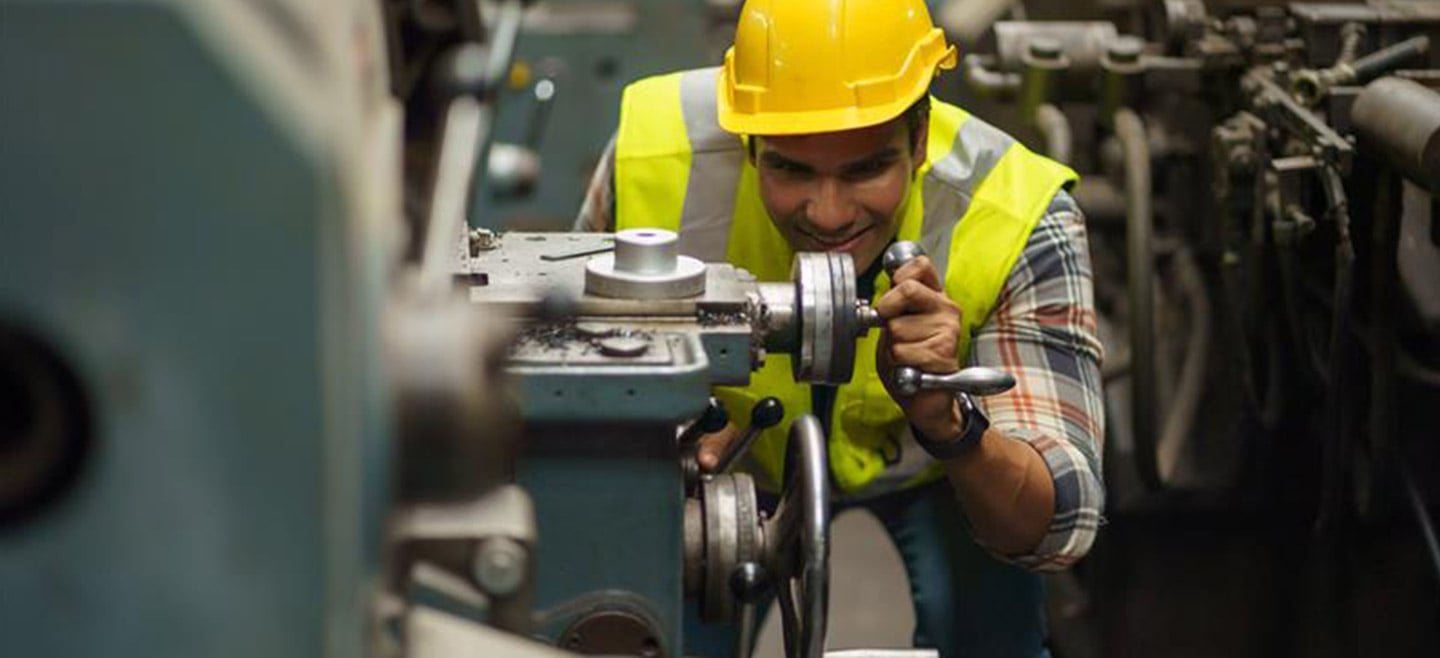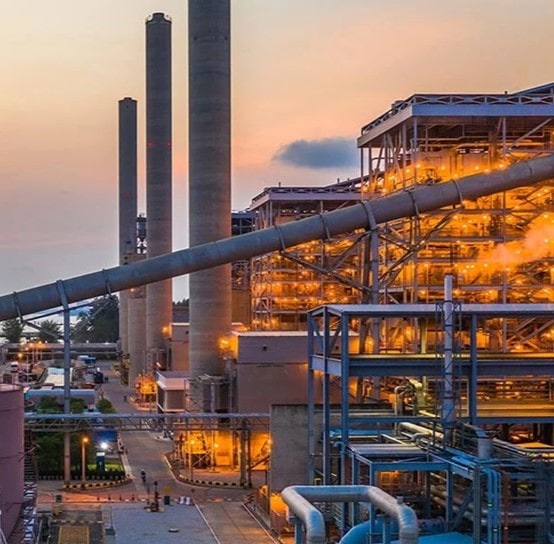-
Business Consulting
Our business consulting specialists offer a comprehensive blend of strategic advisory services. We assess the business, industry, operating model, synergy, skill sets and vision of the organisation and recommend the way forward
-
Digital Natives
Unlock growth with Grant Thornton Bharat's Digital Natives solutions. Customised support for tech-driven companies in healthcare, gaming, and more.
-
New and Emerging Tech
In a world where change is constant, staying ahead means staying adaptable. At Grant Thornton Bharat, we believe the future belongs to those who can evolve quickly, leveraging new and emerging technologies not just as trends, but as strategic levers for transformation.
-
Finance Transformation
Using a holistic approach, integrating digitalisation and digital transformation we help clients achieve transparency, control, governance, and faster decision making through real-time data within the business.
-
Human Capital Consulting
Our Human Capital Consulting team harnesses technology and industry expertise to assist in constructing adaptable organisations with transparency, fostering productive and value-driven workforces, and inspiring employees to engage meaningfully in their tasks.
-
Production Linked Incentive Scheme
Production-linked Incentive Scheme by the Indian government is aimed at boosting manufacturing. Grant Thornton Bharat offers varied services across sectors to help businesses avail of this scheme.
-
Public Sector Advisory
Our Public Sector Advisory team has focused streams, aligned with the core priorities of the Government of India. We are responsible for providing innovative and customized technical and managerial solutions.
-
Tech Advisory
We have amalgamated Digital Transformation, IT Advisory & Information Management and Analytics into a new offering, DigiTech.

-
Direct Tax services
Our tax specialists offer a comprehensive blend of tax services, tax litigation, regulatory and compliance services, helping you navigate through complex business matters.
-
Indirect Tax Services
Get tax services by leading tax firm Grant Thornton India. Our indirect tax services include consulting, compliance and litigation services for corporate, international and transaction tax
-
Transfer Pricing
Our transfer pricing services experts provide a range of services from provision of APA services to handling large global assignments including Country by Country reporting.
-
US Tax
At Grant Thornton, we help individuals and dynamic companies deal with US tax laws, which are one of the most complicated tax legislations across the world.
-
Financial Services - Tax
Best financial consulting services, tailored for small and large businesses by the experts having comprehensive knowledge of domestic laws and access to multifaceted tools to provide a valuable results.
-
Financial Reporting Advisory Services
Our experts have significant hands-on experience in providing IFRS/US GAAP services, end-to-end solutions and support services to fulfil financial reporting requirements.
-
Fund accounting and financial reporting
International operations often lack standardisation and have varied local reporting formats and requirements. Our experts can offer proactive insights, practical guidance, and positive progress and help meet regulatory timeframes.
-
Compliance and Secretarial Services
Our experts can assist in overhauling the entire compliance machinery of the organisation through evaluation of the applicable statutory obligations, monitoring of adequate governance controls, reporting and providing ongoing support.
-
Global People Solutions
As businesses transcend borders, both domestic and global considerations need equal attention. Our interim CFO and financial controller support services help organisations meet the business vision.
-
Finance and accounting outsourcing
Our accounting experts assist organisations in managing their accounting and reporting. Our dedicated Integrated Knowledge and Capability Centre (IKCC), allows us to service both the domestic and global markets efficiently and cost-effectively
-
Compliance Management System
We have automation solutions for you that will allow meeting government requirements and remain diligent, which when failed, can lead to penalties and loss in revenue.
-
Centres of Excellence
Strategic business hubs for global delivery
-
Global compliance and reporting solutions
At Grant Thornton Bharat, we meet the challenges of our clients and help them unlock their potential for growth. Our professionals offer solutions tailored to meet our clients’ global accounting and statutory reporting requirements. With first-hand experience of local reporting requirements in more than 145+ locations worldwide, we provide seamless and consistent international service delivery through a single point of contact.
-
Related-party transaction governance
Related-party transactions (RPTs) are common in business structures where organisations engage with their group entities, such as holding companies, subsidiaries, associate concerns, joint ventures, or key management personnel, for various operational or financial purposes.
-
Family Offices and Private Client Services
Grant Thornton Bharat Private Client Services offers tailored consulting for family-owned businesses, focusing on governance, compliance, tax, succession planning, and family office structuring to sustain wealth and preserve legacies across generations.
-
Labour codes
Labour codes solutions help you transition through the new legislation. At Grant Thornton, we help businesses divide their approach to make sure a smooth transition.
-
Alerts
At Grant Thornton India, with the help of our tax alerts, we help to provide updates on how to minimise your tax exposure and risks.
-
India investment roadmap
The India Investment Roadmap resource is designed to navigate the complexities of Indian tax and regulatory laws, providing seamless guidance and a comprehensive set of solutions to ensure a smooth process for investors aiming to establish or expand their presence in India.
-
CFO Solutions
Our comprehensive suite of solutions for CFOs

-
Crisis and Resilience
Cyber risks, financial crime and regulatory scrutiny demand strong preparedness. Our forensic team helps organisations build robust crisis and resilience frameworks to protect value and maintain trust.
-
Cyber
In today’s time, businesses have gone through large transformation initiatives such as adoption of digital technologies, transition to cloud, use of advanced technologies et al.
-
ESG consulting
Grant Thornton Bharat offers holistic ESG consulting solutions for sustainable business outcomes. With industry expertise and AI technology, we drive long-term value.
-
Risk analytics
Grant Thornton Bharat’s CLEARR Insights is a state-of-the art data analytics platform that will help you in seamless data analysis and efficient decision-making.
-
Forensic & Investigation Services
The team of forensic consulting services experts consists of the best intelligence corporate experts, and fraud risk, computer forensic experts to deliver most effective solutions to dynamic Indian businesses.
-
Risk Optimisation
Our Governance, Risk and Operations (GRO) services encompass Internal Audit, Enterprise Risk Management, Internal Financial Controls, IT advisory, Standard Operating Procedures and other services.

-
Deal Advisory
Unlike other M&A advisory firm in India, we offer deal advisory services and work exclusively with controlled and well-designed strategies to help businesses grow, expand and create value.
-
Due Diligence
Grant Thornton’s financial due diligence services are aimed at corporate looking for mergers and acquisitions, private equity firms evaluating investments and businesses/promoters considering sale/divestment.
-
Debt & Special Situations Solutions
Grant Thornton Bharat offers specialist debt and special situations consulting services, including restructuring, insolvency, and asset tracing solutions.
-
IPO Services
Grant Thornton Bharat’s IPO services ensure optimal scaling of organisations in the financial markets
-
Transaction Tax Services
Our transaction tax experts understand your business, anticipate your needs and come up with robust tax solutions that help you achieve business objectives ensuring compliance and efficiency
-
Overseas Listing
Overseas listing presents a perfect platform for mid-sized Indian companies with global ambitions. Grant Thornton’s team of experts in listings, work closely with clients during all stages.
-
Valuations
Valuation services are central to every deal lifecycle — from pre-deal strategy to post-transaction integration. Grant Thornton Bharat delivers precise, compliant, and defensible valuations across regulatory, financial reporting, and transaction contexts. Our experts apply deep technical and sector insights to ensure fair value, mitigate risk, and support decision-making for M&A, private equity, litigation, and intangible assets. Every deal begins with the right value — we help you discover it.
-
Financial Reporting Advisory Services
Grant Thornton Bharat Financial Reporting Advisory Services offer end-to-end solutions for complex financial requirements, including GAAP conversions, IPO support, and hedge accounting advisory, ensuring accurate financial reporting and compliance.
-
Financial Statement Audit and Attestation Services
Grant Thornton Bharat offers customised financial statement audit and attestation services, ensuring impeccable quality and compliance with global standards. Our partner-led approach, technical expertise, and market credibility ensure effective solutions for your business needs.

- Agriculture
- Asset management
- Automotive and EV
- Banking
- Education and ed-tech
- Energy & Renewables
- Engineering & industrial products
- Fintech
- FMCG & consumer goods
- Food processing
- Gaming
- Healthcare
- Urban infrastructure
- Insurance
- Media
- Medical devices
- Metals & Mining
- NBFC
- Pharma, bio tech & life sciences
- Real estate and REITs
- Retail & E-commerce
- Specialty chemicals
- Sports
- Technology
- Telecom
- Tourism & hospitality
-
 Thought leadership Co-lending in India: Expanding credit access for MSMEsIn today’s rapidly evolving financial landscape, co-lending has emerged as a key enabler of credit expansion in India, facilitating partnerships between banks and non-banking financial companies (NBFCs) to extend credit more efficiently to underserved segments.
Thought leadership Co-lending in India: Expanding credit access for MSMEsIn today’s rapidly evolving financial landscape, co-lending has emerged as a key enabler of credit expansion in India, facilitating partnerships between banks and non-banking financial companies (NBFCs) to extend credit more efficiently to underserved segments. -
 Article Why India’s financial inclusion journey needs to focus on equity and access to creditFinancial services have expanded over a decade, giving millions access to bank accounts and digital payments. But true empowerment needs to reach every corner of the country if growth is to be long-term and sustained
Article Why India’s financial inclusion journey needs to focus on equity and access to creditFinancial services have expanded over a decade, giving millions access to bank accounts and digital payments. But true empowerment needs to reach every corner of the country if growth is to be long-term and sustained -
 Thought Leadership Competitive and sustainable agriculture & food processing in KeralaThe economy of Kerala is primarily driven by the services sector, which contributes 66% to the Gross State Domestic Product (GSDP).
Thought Leadership Competitive and sustainable agriculture & food processing in KeralaThe economy of Kerala is primarily driven by the services sector, which contributes 66% to the Gross State Domestic Product (GSDP). -
 Article Economic Survey 2024-25: Deregulation, investment and innovation for a Viksit BharatIndia's economic growth remains for a steady trajectory with real GDP expected to grow at 6.4% in FY25 and in the range of 6.3%-6.8% in FY26, reflecting resilience despite global uncertainties.
Article Economic Survey 2024-25: Deregulation, investment and innovation for a Viksit BharatIndia's economic growth remains for a steady trajectory with real GDP expected to grow at 6.4% in FY25 and in the range of 6.3%-6.8% in FY26, reflecting resilience despite global uncertainties.
-
Quarterly Aviation Insights
Explore the latest trends in aviation industry with Grant Thornton Bharat’s Quarterly Aviation Insights. Stay updated on industry growth, market shifts & key developments.

-
Freight Forward: Quarterly insights
Logistics sector in India is adapting to rising costs, global disruptions, and the growing urgency of sustainability.
-
India-UK
India-UK
-
India - Japan
India - Japan

Manufacturing drives India’s industrial output
The manufacturing sector in India is the largest contributor to industrial output, accounting for 77.6% of total industrial production. This dominance underscores its central role in driving industrial activity and employment.
- The Index of Industrial Production (IIP) monitors monthly growth across three sectors: mining, manufacturing, and electricity.
- In April 2025, the IIP rose to 152, up from 148 in April 2024, reflecting steady industrial momentum.
- Indian manufacturing sector grew by 3.4%, with 16 out of 23 industry groups showing positive growth.
- The machinery and equipment segment led the surge with a 17.0% increase, indicating strong demand and innovation.
Manufacturing contributes approximately 17% to India’s GDP, making it a vital engine of economic expansion.
- To meet the 2047 target of 25% GDP contribution, the sector must grow at a consistent annual rate of 15%.
- In FY25, industrial Gross Value Added (GVA) rose by 4.3%, a slowdown from 11% in FY24.
- The deceleration was primarily due to weaker performance in petroleum, metals, and cement, highlighting the need for diversification and modernisation.
Engineering and electronics power global integration
India’s engineering sector, the largest industrial segment, drives 63% of foreign collaborations, supporting key industries like infrastructure, energy, and automotive. Simultaneously, domestic electronics production is evolving, reducing import dependence and enhancing India’s role in the global value chain (GVC) through high value finished goods beyond basic assembly.
Meanwhile, domestic electronics production is transforming, reducing import reliance and strengthening India's standing in the GVCs. The country has moved beyond assembly-based production to high-value finished goods, reinforcing its competitive edge.
However, India's global electronics export share remains modest, highlighting the need for deeper localisation of high-tech components, investment in R&D, and strong design capabilities. This shift toward value-added production enhances economic resilience, attracts foreign investment, fosters innovation, and positions India as a key supplier in international markets.
Strengthening India’s role in GVC
GVCs integrate manufacturing with pre- and post-production services via global capability centres (GCCs), driving 70% of international trade. In 2022, GVC-related trade made up 40.3% of India's gross trade, underscoring the need for deeper involvement in electronics, semiconductors, automobiles, chemicals, and pharmaceuticals. India's auto component exports remain modest despite a strong base, requiring stronger global linkages.
The global economic centre of gravity is shifting eastward, with Asian economies like China, Vietnam, and India playing key roles in GVCs. Asia's rise in manufacturing, trade, and regional integration — exemplified by the RCEP — has strengthened its GVC position. Vietnam thrives due to efficient policies and strategic location, while China remains dominant in high-value manufacturing. Despite its potential, India faces challenges such as high tariffs, regulatory hurdles, and low productivity. To better integrate into GVCs, India must reform trade policies, boost innovation, and leverage its demographic and FDI advantages. Successful integration is likely to reinforce Asia's global economic leadership.
Building India’s global manufacturing leadership
Significant opportunities for higher value addition exist across various sub-sectors in the manufacturing industry. With technological progress, policy reforms, and global demand shifts, Indian industries can move beyond low-cost production and position themselves as leaders in innovation and premium manufacturing. Key sectors such as electronics, biotechnology, automotive, aerospace, renewable energy, advanced materials, and medical devices are poised for substantial growth, driving economic expansion and enhancing India's global competitiveness. By focusing on research & development, automation, and high-tech capabilities, Indian manufacturers can capture more value in the production chain and accelerate the country's transformation into a global manufacturing hub.
The engineering sector continues to play a crucial role in India's industrial growth. A strong push toward self-reliance is evident with multiple initiatives aimed at enhancing manufacturing in India while reducing import dependency. Production growth has been steady, with electronic goods seeing remarkable growth — including 99% of smartphones being manufactured locally. India's semiconductor ecosystem has also gained significant momentum, with five landmark projects receiving approval and a total combined investment nearing USD 17.78 billion (INR 1.52 lakh crore) to boost domestic chip production and reduce reliance on imports. Key initiatives include a USD 10 billion (INR 83,947 crore) joint venture in Maharashtra for analogue and mixed-signal semiconductor manufacturing, Micron Semiconductor's Special Economic Zone (SEZ) in Gujarat, and Aequs Group's SEZ in Karnataka, all aimed at strengthening domestic capacity and fostering high-tech employment. In light of this, there is a need to ensure that the right manufacturing technology and talent are available along with a robust ecosystem to enhance productivity, quality, and cost competitiveness. At the same time, India's participation in global value chains is becoming increasingly vital, allowing domestic industries to integrate with international production networks, improve efficiencies, and drive higher-value exports. Strengthening these linkages, coupled with investments in Industry 4.0, digital transformation, and innovation-driven strategies, will not only elevate India’s competitiveness but also reinforce its role as a key player in the global manufacturing landscape.
Shridhar Kamath, Partner and Industry Leader, Engineering and Industrial Products, Grant Thornton Bharat

Engineering and Industrial Products
Quarterly newsletter - July 2025
